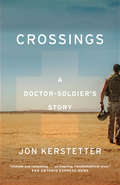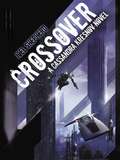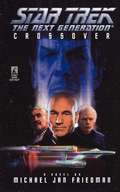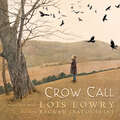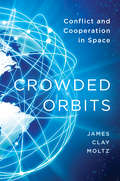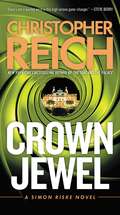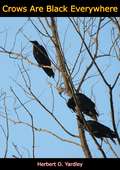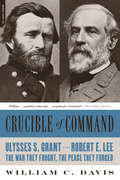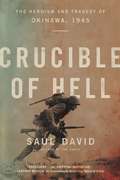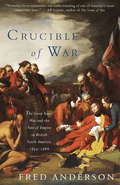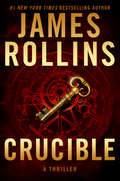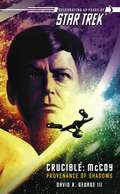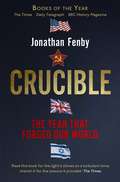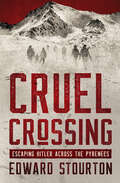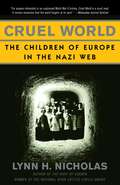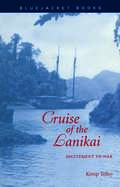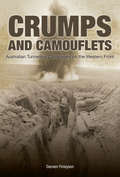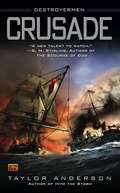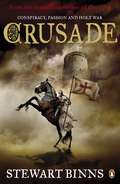- Table View
- List View
Crossing the Wire: The untold stories of Australian POWs in battle an captivity during WWI (Big Sky Publishing Ser.)
by David Coombes"Truly we are objects of interest to the Jerries we meet on the road, and especially in the villages. Taunts are hurled at us; epithets are numerous, and souvenir hunters molest us, but so far not violently. After passing through the village of Villers, we come across some British prisoners who are clearing the road, and they present a sorry spectacle, unshaven and dirty looking... Some offered some appeal for food, but we have none to give. In fact we are ourselves hungry... Their predicament does not create in us a very favourable impression, although I like others, do not realise the seriousness of what is in store for us. The future is a blank, as no-one knows what it holds." So wrote an Australian prisoner-of-war, Corporal Lancelot Davies, only recently taken prisoner at the first battle of Bullecourt, on 11 April 1917. For him - like another 1,200 Australians captured at Bullecourt - the future was indeed `blank' and unpredictable. The experiences of Australian prisoners of war (POWs) or Kriegsgefangeners held captive in Germany has been largely forgotten or ignored- overshadowed by the terrible stories of Australians imprisoned by the Japanese during World War II. Yet, as David Coombes makes known, the stories are interesting and significant - not only providing an account of what those young Australian soldiers experienced, and the spirit they showed in responding to captivity - but also for the insight it provides into Germany in the last eighteen months of the war. Drawing on previous inaccessible records, Coombes focuses on one Australian brigade, the 4th Infantry, from its formation in 1914, through Gallipoli to its baptism of fire on the Western Front, culminating in the first battle of Bullecourt - which, in turn, leads to the prisoner of war experience.
Crossings: A Doctor-Soldier's Story
by Jon KerstetterEvery juncture in Jon Kerstetter’s life has been marked by a crossing from one world into another: from civilian to doctor to soldier; between healing and waging war; and between compassion and hatred of the enemy. When an injury led to a stroke that ended his careers as a doctor and a soldier, he faced the most difficult crossing of all, a recovery that proved as shattering as war itself.Crossings is a memoir of an improbable, powerfully drawn life, one that began in poverty on the Oneida Reservation in Wisconsin but grew by force of will to encompass a remarkable medical practice. Trained as an emergency physician, Kerstetter’s thirst for intensity led him to volunteer in war-torn Rwanda, Kosovo, and Bosnia, and to join the Army National Guard. His three tours in the Iraq War marked the height of the American struggle there. The story of his work in theater, which involved everything from saving soldiers’ lives to organizing the joint U.S.–Iraqi forensics team tasked with identifying the bodies of Saddam Hussein’s sons, is a bracing, unprecedented evocation of a doctor’s life at war.But war was only the start of Kerstetter’s struggle. The stroke he suffered upon returning from Iraq led to serious cognitive and physical disabilities. His years-long recovery, impeded by near-unbearable pain and complicated by PTSD, meant overcoming the perceived limits of his body and mind and re‑‑ imagining his own capacity for renewal and change. It led him not only to writing as a vocation but to a deeper understanding of how healing means accepting a new identity, and how that acceptance must be fought for with as much tenacity as any battlefield victory.
Crossover: A Cassandra Kresnov Novel (Cassandra Kresnov #1)
by Joel ShepherdCrossover is the first novel in a series which follows the adventures of Cassandra Kresnov, an artificial person, or android, created by the League, one side of an interstellar war against the more powerful, conservative Federation. Cassandra is an experimental design -- more intelligent, more creative, and far more dangerous than any that have preceded her. But with her intellect come questions, and a moral awakening. She deserts the League and heads incognito into the space of her former enemy, the Federation, in search of a new life. Her chosen world is Callay, and its enormous, decadent capital metropolis of Tanusha, where the concerns of the war are literally and figuratively so many light years away. But the war between the League and the Federation was ideological as much as political, with much of that ideological dispute regarding the very existence of artificial sentience and the rules that govern its creation. Cassandra discovers that even in Tanusha, the powerful entities of this bloody conflict have wound their tentacles. Many in the League and the Federation have cause to want her dead, and Cassandra's history, inevitably, catches up with her. Cassandra finds herself at the mercy of a society whose values preclude her own right even to exist. But her presence in Tanusha reveals other fault lines, and when Federal agents attempt to assassinate the Callayan president, she finds herself thrust into the service of her former enemies, using her lethal skills to attempt to protect her former enemies from forces beyond their ability to control. As she struggles for her place and survival in a new world, Cassandra must forge new friendships with old enemies, while attempting to confront the most disturbing and deadly realities of her own existence.
Crossover: A Novel (Star Trek: The Next Generation)
by Michael Jan FriedmanContinuing the mission he began in "Unification," Starfleet Ambassador Spock endeavors to impart the logic of the Vulcan way to a small band of Romulans eager to unite the Romulan Empire and the planet Vulcan. But unbeknownst to them, a Romulan spy has joined the ranks disguised as a Unification sympathizer. Deceived by this traitor, Spock and his students are taken hostage. Fearful that Spock's knowledge of Federation security will fall into enemy hands, Starfleet dispatches its best ship, the U.S.S. EnterpriseTM 1701-D, and most respected captain, Jean-Luc Picard, to secure the hostages' release. Spock's former shipmate from the original Starship EnterpriseTM, Ambassador McCoy -- over one hundred forty years old, but still as feisty as ever -- is brought in to consult on the negotiations. Their situation is further complicated when Captain Montgomery Scott confiscates an out-of-service starship and effects his own daring rescue of Spock. Picard must now find a way to preserve the Federation's security and prevent a war while treading a mindfield of danger and deadly Romulan politics that threaten his ship, his crew, and the Federation he serves.
Crow Call (Junior Great Books Series 3)
by Lois LowryThe two-time Newbery medalist has crafted “a loving representation of a relationship between parent and child” in post-WWII America (Publishers Weekly, starred review).This is the story of young Liz, her father, and their strained relationship. Dad has been away at WWII for longer than she can remember, and they begin their journey of reconnection through a hunting shirt, cherry pie, tender conversation, and the crow call. This allegorical story shows how, like the birds gathering above, the relationship between the girl and her father is graced with the chance to fly.“The memory of a treasured day spent with a special person will resonate with readers everywhere.” —School Library Journal (starred review)“Beautifully written, the piece reads much like a traditional short story . . . the details of [Ibatoulline’s] renderings gracefully capture a moment in time that was lost. Relevant for families whose parents are returning from war, the text is also ripe for classroom discussion and for advanced readers.” —Kirkus Reviews
Crowded Orbits: Conflict and Cooperation in Space
by James Clay MoltzSpace has become increasingly crowded since the end of the Cold War, with new countries, companies, and even private citizens operating satellites and becoming spacefarers. This book offers general readers a valuable primer on space policy from an international perspective. It examines the competing themes of space competition and cooperation while providing readers with an understanding of the basics of space technology, diplomacy, commerce, science, and military applications. The recent expansion of human space activity poses new challenges to existing treaties and other governance tools for space, increasing the likelihood of conflict over a diminishing pool of beneficial locations and resources close to Earth. Drawing on more than twenty years of experience in international space policy debates, James Clay Moltz examines possible avenues for cooperation among the growing pool of space actors, considering their shared interests in space traffic management, orbital debris control, division of the radio frequency spectrum, and the prevention of military conflict. Moltz concludes with policy recommendations for enhanced international collaboration in space situational awareness, scientific exploration, and restraining harmful military activities.
Crown Jewel (Simon Riske #2)
by Christopher ReichStolen sports cars, brilliant casino heists, and the brazen kidnapping of a prince: only the shadowy spy-for-hire Simon Riske can stop the mastermind behind it all.Monte Carlo's lavish casinos have become the target of a sophisticated and brutal team of professional gamblers; a casino dealer has been beaten to death; a German heiress's son has been kidnapped. Who better to connect the crimes and foil a daringly brilliant plot than Simon Riske, freelance industrial spy? Riske -- part Bond, part Reacher -- knows Monte Carlo well: it's where he was once a thrill-seeking thief himself, robbing armored trucks and leading police on dangerous car chases across the Côted'Azur, until he was double-crossed, served his time, and graduated as an investment genius from the Sorbonne.Now Riske is a man who solves problems, the bigger and "riskier" the better. From the baccarat tables of Europe's finest casinos to the superyachts moored in Monaco's Port Hercule to a secluded chalet deep in the Swiss Alps, Riske will do what he does best: get in over his head, throw himself into danger, and find a way to outthink and outmaneuver villains of every stripe. In one of the most clever, enjoyable, and entertaining new series to come along in years, this sequel to The Take gives readers what they want most: a hero we can root for, locales we wish we were in, and a plot that never lets up.
Crows are Black Everywhere
by Herbert O. YardleyMajor Herbert O. Yardley led an exciting and amazing life. As the deviser of a new diplomatic cipher code for the Department of State; and as head of the U.S. Government’s cryptographic department—the so-called Black Chamber—from 1919-1929, he contributed enormously to the U.S. efficiency in war and in peace. During World War II, he served as a Major, becoming chief of military intelligence No. 8 in 1917. Later he served on General Pershing’s staff as a military observer. He was in charge of military intelligence in C-17 at the peace conference, and on the basis of his record received the Distinguished Service medal.From 1938 to 1940, Yardley acted as personal adviser to Generalissimo Chiang Kai-shek, the Chinese nationalist politician, revolutionary and military leader, who served as the leader of the Republic of China between 1928-1975, first in China until 1949, and then in Taiwan until his death.Yardley’s two years as Chiang Kai-shek’s adviser form the background for the story told in the present volume, Crows Are Black Everywhere, which was first published in 1945. It tells “an intricate story of espionage and counterespionage in Chungking, in which are involved an American girl reporter, Peggy, who wants to be impartial—and finds she cannot; Bill, instructor of Chinese fighter pilots, and Tina, his Eurasian mistress, whose half-brother is Wang, of doubtful patriotism; Fritz, a German-American who has designs on Peggy; and various other expatriates, spies and loyal Chinese.”A gripping read!
Crucible of Command: Ulysses S. Grant and Robert E. Lee -- The War They Fought, the Peace They Forged
by William C. DavisA dual biography and a fresh approach to the always compelling subject of these two iconic leaders--how they fashioned a distinctly American war, and a lasting peace, that fundamentally changed our nation
Crucible of Hell: The Heroism and Tragedy of Okinawa, 1945
by Saul DavidFrom the award-winning historian, Saul David, the riveting narrative of the heroic US troops, bonded by the brotherhood and sacrifice of war, who overcame enormous casualties to pull off the toughest invasion of WWII's Pacific Theater -- and the Japanese forces who fought with tragic desperation to stop them.With Allied forces sweeping across Europe and into Germany in the spring of 1945, one enormous challenge threatened to derail America's audacious drive to win the world back from the Nazis: Japan, the empire that had extended its reach southward across the Pacific and was renowned for the fanaticism and brutality of its fighters, who refused to surrender, even when faced with insurmountable odds. Taking down Japan would require an unrelenting attack to break its national spirit, and launching such an attack on the island empire meant building an operations base just off its shores on the island of Okinawa.The amphibious operation to capture Okinawa was the largest of the Pacific War and the greatest air-land-sea battle in history, mobilizing 183,000 troops from Seattle, Leyte in the Philippines, and ports around the world. The campaign lasted for 83 blood-soaked days, as the fighting plumbed depths of savagery. One veteran, struggling to make sense of what he had witnessed, referred to the fighting as the "crucible of Hell." Okinawan civilians died in the tens of thousands: some were mistaken for soldiers by American troops; but as the US Marines spearheading the invasion drove further onto the island and Japanese defeat seemed inevitable, many more civilians took their own lives, some even murdering their own families. In just under three months, the world had changed irrevocably: President Franklin D. Roosevelt died; the war in Europe ended; America's appetite for an invasion of Japan had waned, spurring President Truman to use other means -- ultimately atomic bombs -- to end the war; and more than 250,000 servicemen and civilians on or near the island of Okinawa had lost their lives. Drawing on archival research in the US, Japan, and the UK, and the original accounts of those who survived, Crucible of Hell tells the vivid, heart-rending story of the battle that changed not just the course of WWII, but the course of war, forever.
Crucible of War: The Seven Years' War and the Fate of Empire in British North America, 1754-1766
by Fred AndersonIn this vivid and compelling narrative, the Seven Years' War--long seen as a mere backdrop to the American Revolution--takes on a whole new significance. Relating the history of the war as it developed, Anderson shows how the complex array of forces brought into conflict helped both to create Britain's empire and to sow the seeds of its eventual dissolution. Beginning with a skirmish in the Pennsylvania backcountry involving an inexperienced George Washington, the Iroquois chief Tanaghrisson, and the ill-fated French emissary Jumonville, Anderson reveals a chain of events that would lead to world conflagration. Weaving together the military, economic, and political motives of the participants with unforgettable portraits of Washington, William Pitt, Montcalm, and many others, Anderson brings a fresh perspective to one of America's most important wars, demonstrating how the forces unleashed there would irrevocably change the politics of empire in North America.
Crucible of a Generation: How the Attack on Pearl Harbor Transformed America
by J. Kenneth BrodyCrucible of a Generation tells the story of the fifteen days surrounding the Japanese attack on Pearl Harbor through the pages of eight leading American newspapers. Focusing on publications such as The New York Times and the Chicago Tribune, J. Kenneth Brody paints a vivid picture of U.S. political culture and society at a pivotal moment in the nation's history. Brody considers the papers in full, from headlines to "help wanted" ads, in a text richly illustrated with archival images, wartime posters, and editorial cartoons. The book provides a compelling snapshot of the United States and the role of the media at a time of dramatic tension and global change.
Crucible: A Sigma Force Novel (Sigma Force #14)
by James RollinsIn the race to save one of their own, Sigma Force must wrestle with the deepest spiritual mysteries of mankind in this mind-expanding adventure from #1 New York Times bestselling author James Rollins, told with his trademark blend of cutting edge science, historical mystery, and pulse-pounding action.Arriving home on Christmas Eve, Commander Gray Pierce discovers his house ransacked, his pregnant lover missing, and his best friend’s wife, Kat, unconscious on the kitchen floor. With no shred of evidence to follow, his one hope to find the woman he loves and his unborn child is Kat, the only witness to what happened. But the injured woman is in a semi-comatose state and cannot speak—until a brilliant neurologist offers a radical approach to "unlock" her mind long enough to ask a few questions.What Pierce learns from Kat sets Sigma Force on a frantic quest for answers that are connected to mysteries reaching back to the Spanish Inquisition and to one of the most reviled and blood-soaked books in human history—a Medieval text known as the Malleus Maleficarum, the Hammer of Witches. What they uncover hidden deep in the past will reveal a frightening truth in the present and a future on the brink of annihilation, and force them to confront the ultimate question: What does it mean to have a soul?
Crucible: Provenance of Shadows (Star Trek)
by David R. George IIIDavid R. George's Crucible Trilogy explores the legacy of one pivotal, crucial moment in the lives of the men at the heart of Star Trek -- what led them to it, and to each other, and how their destinies were intertwined. For Doctor Leonard McCoy, life takes two paradoxically divergent paths. In one, displaced in time, he saves a woman from dying in a traffice accident, and in doing so alters Earth's history. Stranded in the past, he struggles to find a way back to his own century. But living an existence he was not meant to, he will eventually have to move on, and ultimately face the shadows born of his lost life. In the other, he is prevented from saving the woman's life, allowing Earth's history to remain unchanged. Returning to the present, he is nonetheless haunted by the echoes of an existence he never lived, and by fears which will bring him full circle to the shadows he never faced.
Crucible: The Long End of the Great War and the Birth of a New World, 1917-1924
by Charles EmmersonThe gripping story of the years that ended the Great War and launched Europe and America onto the roller coaster of the twentieth century, Crucible is filled with all-too-human tales of exuberant dreams, dark fears, and the absurdities of chanceIn Petrograd, a fire is lit. The Tsar is packed off to Siberia. A rancorous Russian exile returns to proclaim a workers' revolution. In America, black soldiers who have served their country in Europe demand their rights at home. An Austrian war veteran trained by the German army to give rousing speeches against the Bolshevik peril begins to rail against the Jews. A solar eclipse turns a former patent clerk into a celebrity. An American reporter living the high life in Paris searches out a new literary style.Lenin and Hitler, Josephine Baker and Ernest Hemingway, Rosa Luxemburg and Mustafa Kemal--these are some of the protagonists in this dramatic panorama of a world in turmoil. Revolutions and civil wars erupt across Europe. A red scare hits America. Women win the vote. Marching tunes are syncopated into jazz. The real becomes surreal.Encompassing both tragedy and humor, the celebrated author of 1913 brings immediacy and intimacy to this moment of deep historical transformation that molded the world we would come to inherit.
Crucible: Twelve Months that Changed the World Forever
by Jonathan FenbyOne year shaped the world we know today. This is the page-turning story of the pivotal changes which were forged in the space of thirteen months of 1947-48 Two years after the end of the second conflict to engulf the world in twenty years, and the defeat of the Axis forces of Germany, Italy and Japan, this momentous time saw the unrolling of the Cold War between Joseph Stalin's Soviet Russia and the Western powers under the untried leadership of Harry Truman as America came to play a global role for the first time.The British Empire began its demise with the birth of the Indian and Pakistan republics with the flight of millions and wholesale slaughter as Vietnam, Indonesia and other colonies around the globe vied for freedom. 1948 also marked the creation of the state of Israel, the refugee flight of Palestinians and the first Arab-Israeli war as well as the victories of Communist armies that led to their final triumph in China, the coming of apartheid to South Africa, the division of Korea, major technological change and the rolling out of the welfare state against a backdrop of events that ensured the global order would never be the same again. This dynamic narrative spans the planet with overlapping epic episodes featuring such historic figures as Truman and Marshall, Stalin and Molotov, Attlee and Bevin, De Gaulle and Adenauer, Mao Zedong and Chiang Kai-shek, Nehru and Jinnah, Ben Gurion and the Arab leaders. Between them, they forged the path to our modern world.
Cruel Crossing: Escaping Hitler Across the Pyrenees
by Edward StourtonA chronicle of the perilous European mountain escape route used during World War II, with epic stories from survivors and their families. After the Nazi invasion of Belgium in 1940, an underground network was established to help British servicemen escape German-occupied Europe. As the war progressed, others began using the secret route as well, traveling to the south of France, over the Pyrenees mountains, and into neutral Spain. The Chemin de la Liberté runs forty miles across the central Pyrenees. Since 1994, it has been hiked each July to commemorate those who made the courageous journey during the Nazi occupation of France. BBC Radio presenter Edward Stourton made the trek in 2011, and from his fellow hikers, he uncovered amazing stories of wartime bravery and perseverance. In Cruel Crossing, Stourton draws on interviews with survivors, as well as family members of those who were there, to paint a history of this little-known aspect of World War II. It is colored by tales of hardship from soldiers trapped behind enemy lines, persecuted Jews fleeing Hitler and Vichy France, and bold resistance fighters aiding their escape. There are scrambles across rooftops in the dead of night, drops from speeding trains, treachery, murder, romance, and of course, heroism. These personal stories offer a dramatic and moving trip through the past, preserving the memories of those who endured so much to gain back their freedom.Praise for Cruel Crossing &“Stourton writes evocatively and with sensitivity of the people who made the arduous trek. . . . An engaging collection of tales.&” —Daily Express &“In Mr. Stourton&’s hands, the Pyrenees become a grim amphitheatre for heroism and betrayal, collusion and rebellion. . . . Cruel Crossing recaptures much of the adventure and the fun, as well as the horror and the bitterness, as it brilliantly conjures up the voices of the past.&” —Country Life &“Heart-breaking and breath-taking . . . thoroughly moving and very readable.&” —Simon Mawer, author of The Glass Room &“An important book packed with poignant stories, remarkable characters and uncomfortable truths.&” —Clare Mulley, author of The Spy Who Loved
Cruel World: The Children of Europe in the Nazi Web
by Lynn H. NicholasTo be a child in mid-twentieth-century Europe was to be not a person but an object, available for use in the service of the totalitarian state. Very soon after Adolf Hitler came to power, policies of eugenic selection and euthanasia began to weed ill or disabled children out of the New Order by poison, gas, and starvation. Defect-free "good blood" children were subjected to an "education" based on racism, propaganda, and the glorification of the Führer, and were deliberately deprived of free time that would allow independent thought or action. Once the war began, "Nordic"-looking children were kidnapped from families in the conquered lands and subjected to "Germanization." Meanwhile, hundreds of thousands of "bad blood" children--Jews, Gypsies, Poles, Ukrainians, Russians(were separated from their families and condemned to forced migration, slave labor, sadistic experiments, starvation, and mass execution. At the end of the war, uprooted children of every origin wandered the bombed-out cities and countryside, some having been taken from home at such a young age that they did not know where they had come from or even their own names. Millions surged into and out of DP camps, exploited by political and religious groups, while the Allies and the fledgling United Nations tried mightily to put families back together and to find new homes for the orphans.All the riveting narrative skill and impeccable scholarship that distinguished Lynn Nicholas's first book, The Rape of Europa (winner of the National Book Critics Circle Award for nonfiction), are present in her study of these terrible crimes against humanity. To research this story she has delved into the governmental and military archives of many nations, and has interviewed countless individuals. She shows the relationship of the deadly Nazi policies to the brutal tactics used in the USSR in the 1930s and to their rehearsal in the Spanish Civil War, and vividly describes the abject failure of Hitler's campaign to plant Germanizing colonies in the conquered nations. She gives us the stories of survivors of ghastly war-spawned famines(in Greece and Russia in the 1940s, Holland in the "Hunger Winter" of 1945, and Berlin in the Airlift year of 1949(and of British, French, and Dutch children who were evacuated to the countryside; boys and girls sent alone from Europe to England on the Kindertransports; the teenaged soldiers of the Reich; the small veterans of the quarries, the factories, and the camps as well as those who survived in lonely hiding.In Cruel World Lynn Nicholas shows us clearly, and with passionate empathy for the innocent victims, the crimes against children that inevitably result when ideology overwhelms humanity. This powerful book, as it recounts the waking nightmare that enmeshed the lives of Europe's boys and girls, bears witness to our own responsibility to the children of the twenty-first century.From the Hardcover edition.
Cruise Ships: The Small Scale Fleet
by Peter C. SmithPeter C. Smith presents us here with the second release in his visually splendid Cruise Ships series. Whilst his first book concerned itself with the large-scale ships currently cruising through our seas (those weighing 40,000 GT and more) this volume focusses on the other end of the market; the ships that weigh in at less than 40,000 GT, but which are often much more stylish and aesthetically pleasing than their larger-scale counterparts. The elegant interiors and luxurious features on display in today's vast fleet of cruise liners remain unrecorded in all but holiday brochures. This book carries on in the tradition of Peter's last release, giving a complete overview of the best of these ships, the cream of the crop, so to speak.Each colour profile includes external and interior views of the featured ship. Details of the design, building and service history of each vessel are provided with vital statistics of the ship and its facilities.This is a book of reference for maritime enthusiasts, would-be holiday cruisers and those who have been passengers. It serves as an impressive visual tribute to the best of the smaller scale fleet currently cruising globally.As seen in the Bedford Times & Citizen.
Cruise Ships: The Small Scale Fleet
by Peter C. SmithPeter C. Smith presents us here with the second release in his visually splendid Cruise Ships series. Whilst his first book concerned itself with the large-scale ships currently cruising through our seas (those weighing 40,000 GT and more) this volume focusses on the other end of the market; the ships that weigh in at less than 40,000 GT, but which are often much more stylish and aesthetically pleasing than their larger-scale counterparts. The elegant interiors and luxurious features on display in today's vast fleet of cruise liners remain unrecorded in all but holiday brochures. This book carries on in the tradition of Peter's last release, giving a complete overview of the best of these ships, the cream of the crop, so to speak.Each colour profile includes external and interior views of the featured ship. Details of the design, building and service history of each vessel are provided with vital statistics of the ship and its facilities.This is a book of reference for maritime enthusiasts, would-be holiday cruisers and those who have been passengers. It serves as an impressive visual tribute to the best of the smaller scale fleet currently cruising globally.As seen in the Bedford Times & Citizen.
Cruise of the Lanikai
by Kemp TolleyIn early December 1941 in the Philippines, a young Navy ensign named Kemp Tolley was given his first ship command, an old 76-foot schooner that had once served as a movie prop in John Ford's "The Hurricane." Crewed mostly by Filipinos who did not speak English and armed with a cannon that had last seen service in the Spanish-American War, the Lanikai was under top-secret presidential orders to sail south into waters where the Japanese fleet was thought to be. Ostensibly the crew was to spy on Japanese naval movements, but to Tolley it was clear that their mission was to create an incident that would provoke war.Events overtook the plan, however, when Pearl Harbor was bombed before the Lanikai could get underway. When Bataan and Corregidor fell, she was ordered to set sail for Australia and became one of the few U.S. naval vessels to escape the Philippines. In this book Tolley tells the saga of her great adventure during these grim, early days of the war and makes history come alive as he regales the reader with details of the operation and an explanation of President Roosevelt's order. Tolley's description of their escape in Japanese warship-infested waters ranks with the best of sea tales, and few will be able to forget the Lanikai's 4,000-mile, three-month odyssey.
Crumps and Camouflets: Australian Tunnelling Companies on the Western Front
by Damien FinlaysonBelow the shattered ground that separated the British and German infantry on the Western Front in World War I, an unseen and largely unknown war was raging, fought by miners, 'tunnellers' as they were known. They knew at any moment their lives could be extinguished without warning by hundreds of tonnes of collapsed earth and debris.
Crusade (Destroyermen, Book #2)
by Taylor AndersonNEW WORLD. OLD ENEMIES. After being swept from the World War II Pacific into an alternate world, Lieutenant Commander Matthew Reddy and the crew of the USS Walker have allied with the peaceful Lemurians in their struggle against the warlike reptilian Grik. But they are sorely outnumbered, and even the power of Walker cannot turn the tide of battle. Then Reddy finds Mahan, the other destroyer that passed through the rift. Together the ships will teach the Lemurians to stand and fight. Or so they think. For there is another vessel at large: the Amagi, the massive Japanese battleship that Walker was fleeing back in the Pacific. The Amagi also came through the rift ....And the Amagi is in the hands of their enemies.
Crusade (The Making of England Quartet #2)
by Stewart Binns1072 - England is firmly under the heel of its new Norman rulers. The few survivors of the English resistance look to Edgar the Atheling, the rightful heir to the English throne, to overthrow William the Conqueror. Years of intrigue and vicious civil war follow: brother against brother, family against family, friend against friend.In the face of chaos and death, Edgar and his allies form a secret brotherhood, pledging to fight for justice and freedom wherever they are denied. But soon they are called to fight for an even greater cause: the plight of the Holy Land. Embarking on the epic First Crusade to recapture Jerusalem, together they will participate in some of the cruellest battles the world has ever known, the savage Siege of Antioch and the brutal Fall of Jerusalem, and together they will fight to the death.
Crusade And Mission: European Approaches Toward The Muslims
by Benjamin Z. KedarThis wide-ranging study of medieval Europe's response to the challenge of Islam examines the relationship between ideas of crusade and mission, between European projects for military conquest and those for the conversion of Muslims to Christianity. Covering the years from the emergence of Islam to the fourteenth century, Benjamin Z. Kedar discusses not only the crusades and the Crusading Kingdom of Jerusalem but also the confrontation of Catholics and Muslims in Sicily and Spain. Originally published in 1984. The Princeton Legacy Library uses the latest print-on-demand technology to again make available previously out-of-print books from the distinguished backlist of Princeton University Press. These editions preserve the original texts of these important books while presenting them in durable paperback and hardcover editions. The goal of the Princeton Legacy Library is to vastly increase access to the rich scholarly heritage found in the thousands of books published by Princeton University Press since its founding in 1905.

